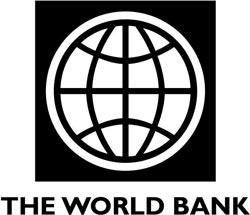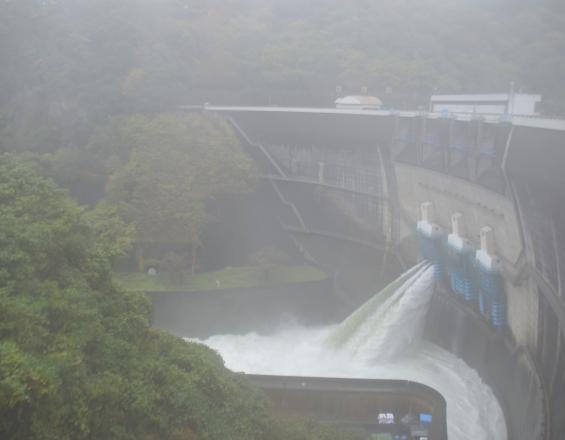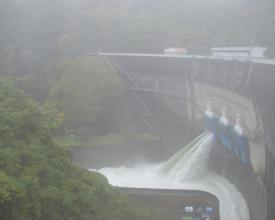
Modernization of Hydromet Services in Japan

Hydrological and meteorological (“hydromet”) hazards, including storms, floods, and droughts, are responsible for 90% of disaster losses globally, and caused 50% of disaster-related deaths between 1980 and 2011. At a time when climate change, rapid urbanization, and population growth are likely to exacerbate the impacts of these hazards, effective hydromet services are critical to safeguarding human life and assets. Japan is a global leader in identifying, predicting, and managing risks posed by these types of hazards, and has strengthened its capacity by learning from severe natural disasters such as the 1959 Isewan Typhoon. Japan’s hydromet services have undergone a strategic modernization process - a combination of institutional strengthening, modernization of systems, and enhanced service delivery - that has led to the establishment of one of the world’s most sophisticated and robust hydromet service systems.
Contexto
Défis à relever
- 51% of Japan’s population and 75% of national assets are located on floodplains. The population density of Japan’s floodplains is 1,600 persons/km2, significantly higher than that of other countries.
- In the past, emphasis was placed on building and optimizing structural measures, such as levees and dams, instead of communicating flood risks to the general public. As a result, many had a false sense of security arising from unreasonably high expectations of physical structures, which led to people increasingly living in flood-prone areas and not making adequate preparations for hydrological or meteorological hazard events.
- The decision of when to make evacuation orders by local governments was a challenge, such as during the 2015 Kanto-Tohoku heavy rainfall, when the provision of hydrological information to the local government was not followed by successful evacuation of residents. As a result, 2 people died and many were injured.
Ubicación
Procesar
Summary of the process
Japan’s extensive experience of identifying, predicting, and managing hydrological and meteorological hazards over centuries has fostered its comprehensive multi-hazard approach and shaped its world-class hydromet services. The three building blocks, based on the framework developed by Rogers and Tsirikunov, are all critical components that have enabled Japan to develop robust institutions, create modern systems, and ensure dissemination of potentially life-saving information to its citizens.
Building Blocks
Institutional Strengthening
Key institutions in Japan’s hydromet landscape have evolved since the 1950’s. For example, hydrological institutions have undergone several changes, such as after the enactment of the 1964 River Law Act (revised version). This law required authorities tasked with managing rivers to adhere to integrated river basin management principles, as opposed to more area-focused disaster management practices that were prevalent prior to this (e.g., shifting from circle levees, which only protect the builder’s community, to continuous levees, which ensure more equitable protection for the wider population). As for meteorological services, the regulatory framework was established under the Meteorological Service Act of 1952, which designated the Japan Meteorological Agency (JMA) as the authoritative body responsible for issuing emergency warnings.
In terms of legal framework, Japan’s laws assign clear roles and responsibilities for the National Hydrological Service (WDMB/MLIT), the National Meteorological Service (JMA), and other key stakeholders to ensure effective coordination.
Enabling factors
- Will and capacity to communicate, coordinate and collaborate across institutions and sectors.
- Political will and resources to establish relevant laws and regulations to assign clear roles and responsibilities and facilitate coordination between different agencies and stakeholders.
Lesson learned
- The period after a major disaster can serve as an opportunity to assess institutional strengths, weaknesses, and make strategic improvements. For example, after the Isewan Typhoon in 1959, which killed over 5,000 people, the Government of Japan conducted a comprehensive review of national strategies. Experiences from this disaster were a major driving force behind the introduction of the 1961 Disaster Countermeasure Basic Act, which brought about systematic improvements to Japan’s hydromet services.
- Legal frameworks should clearly stipulate roles and responsibilities of different actors across government, private and civil sectors, to enable smooth and coordinated implementation of hydrological and meteorological services.
- Hydrological regulatory frameworks should be aligned with and integrated within Integrated Water Resources Management (IWRM). Japan’s hydrological services are a key part of the country’s commitment to IWRM, which has enhanced sustainable water use and effective water cycle governance and promoted water efficiency and conservation of water resources.
Modernization of Systems
The effort to modernize hydrological and meteorological systems in Japan began in the 1950’s and continues to the present day. For example, the JMA Automated Meteorological Data Acquisition System (AMeDAS) is a network of over 1,300 automatic weather stations that was incrementally upgraded from the 1970’s. The system is now capable of collecting data sets from key stations every minute and can deliver information to end-users within 40 seconds. This data serves as a crucial input for early warning systems and enables accurate tracking of weather patterns. Another major milestone has been the series of Geostationary Meteorological Satellites (Himawari-1 to Himawari-8) which have further strengthened hydromet services in not only Japan, but across the Asia-Pacific region. Additionally, the Japan Meteorological Business Support Center (JMBSC) and the Foundation of River & Basin Integrated Communications (FRICS) work to ensure the broader use of hydromet data by municipalities, the general public, and private sector actors.
Enabling factors
- Sufficient financial resources and technical know-how to modernize systems.
- Political will to mobilize resources towards modernization of systems.
Lesson learned
- Strong, quality-assured, user-centric observation systems are critical for delivery of effective hydrological and meteorological services and underpin climate change adaptation and DRM strategies such as river management practices and establishment of early warning systems.
- A “second” operating center, such as a back-up facility that can resume all essential functions and services in the case of an emergency, should be established in order to ensure business continuity.
Enhanced Service Delivery
Users of hydrological and meteorological data in Japan have grown significantly in number with the development of new technologies and sectors; from aviation and shipping to public services such as weather forecasting, there is increasing pressure on hydromet services to provide accurate, real-time information.
Today, up-to-date information on severe weather events is provided to the general public by the JMA, in collaboration with central and local disaster management authorities and other key stakeholders. Reaching first responders and the general public is a critical component of Japan’s effective early warning system, and early warnings at the municipality level have improved over the last decade largely in part to better communication and cooperation between stakeholders.
For example, MLIT’s Erosion and Sediment Control Department established a partnership with prefectural governments to promptly issue landslide alert information to at-risk citizens.
Enabling factors
- Financial resources and will to enhance service delivery.
- Collaboration across government and private sectors to ensure optimal service delivery.
Lesson learned
- A comprehensive multi-hazard approach should be adopted, with collaboration between relevant actors such as disaster management agencies, local governments and private sector entities.
- Early warning systems must be able to deliver essential information to first responders and the general public at the local level.
- The end-user’s needs should inform and shape the development of hydrological and meteorological services, such as delivering clear information through the most appropriate medium.
Impacts
Economic
- Communication of information related to hyrdromet hazards enable private and public-sector actors to better protect their assets. (e.g., seamless early warning systems enable pre-positioning and mobilization of resources to minimize economic impacts of hazard events).
- Accurate and timely hydrological and meteorological data enables better decision-making to optimize economic value creation (e.g., shipping companies can plan best allocation of resources according to weather conditions).
Environmental
- Sound meteorological and hydrological data is essential for decision-making with regards to management of natural resources, and enables Integrated Water Resources Management (IWRM), which preserves vital ecosystems and conservation of natural resources.
- Provision of meteorological and hydrological information can enable actors across public and private sectors to make better decisions with regards to allocation of resources (e.g., fuel efficiency within shipping and aviation sectors).
Social
- Early warning services can save lives, minimize disruption to social infrastructure such as hospitals, schools, and other public facilities, and protect livelihoods.
- Early warning systems can raise awareness of disaster risks and encourage community-level emergency preparedness.
Beneficiaries
- Local communities.
- Private sector entities.
- Government authorities.




